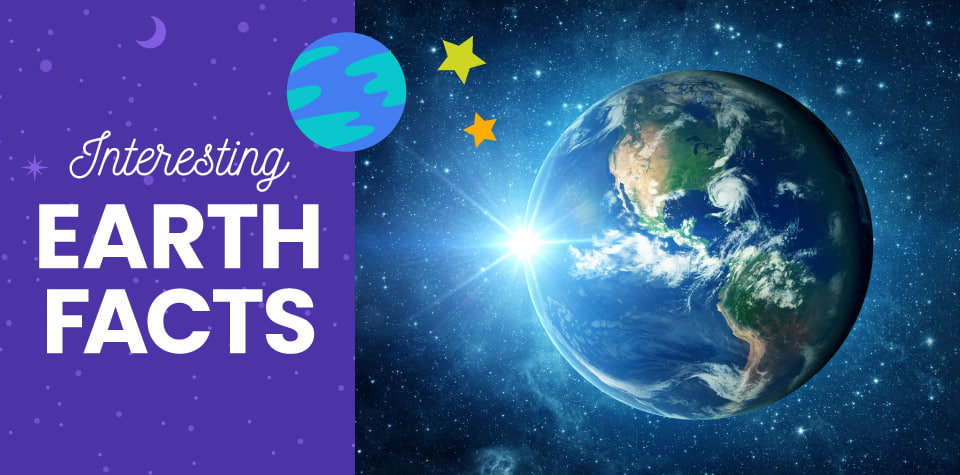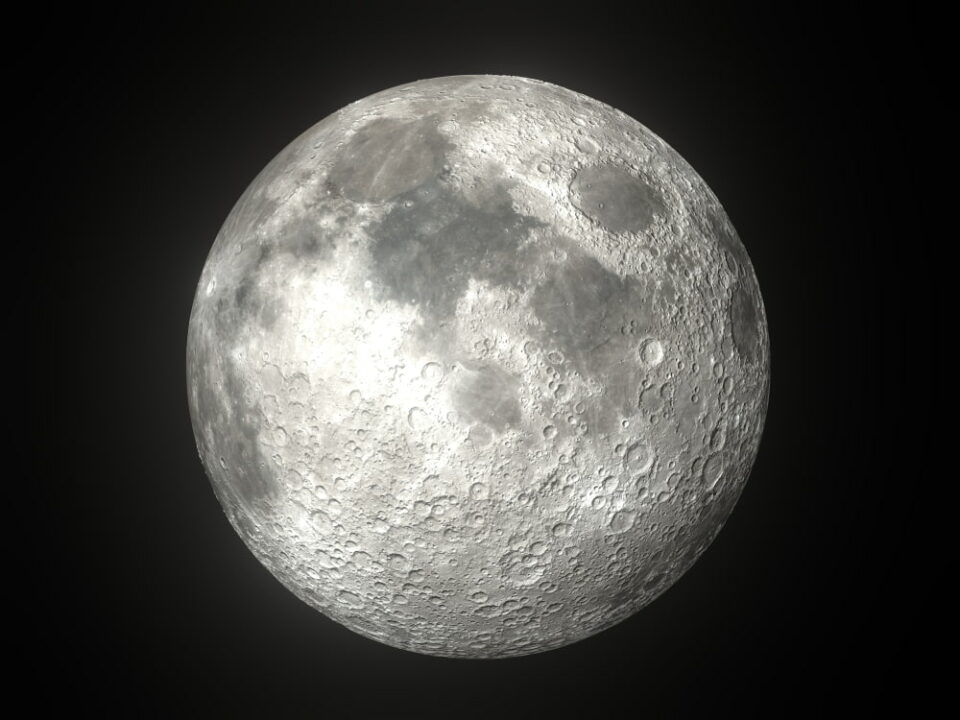
Check Out Six Fascinating Earth and Moon Facts
Is your young space adventurer busy exploring the many planets in the solar system? Why not bring them home for a bit to discover interesting facts about Earth and life on this planet?
Earth is a fascinating place. It’s the third planet from the Sun, the fifth-largest planet in the solar system, and the only planet where life as we know it is possible. However, if it were slightly nearer to or farther from the Sun, or if its axis were to shift even a few degrees, Earth’s surface temperature, seasonal climates, and other conditions would be significantly altered, making life unsustainable. As far as we know, there’s nowhere else in the universe quite like Earth.
And the best part? It’s our home! That means that unlike visiting our planetary neighbors, exploring this fascinating, one-of-a-kind world is as easy as stepping outside. As you and your young explorer get ready to discover the wonders of our home planet, check out these six fun Earth facts for kids.
Enlightening Earth Facts
Earth is full of surprises, and scientists discover new facts about it every day. Approximately 65 percent of our planet’s surface is unexplored, including the ocean’s depths, leaving a lot more to investigate!
Luckily, the 35 percent of Earth we have explored contains plenty of fascinating things to pique a child’s curiosity, including:
- It’s old but not as old as the universe: Scientists have estimated that Earth is about 4.5 billion years old. That’s a lot of time, but when you compare it to the universe’s age, approximately 13.7 billion years, it’s still quite young!
- Goes around in circles: Our planet travels around the Sun at a speed of 67,000 miles per hour (107,827 kilometers per hour). That’s quite a journey every year. Even at that speed, Earth takes 365 days (and six hours) to complete a single trip.
- Heavenly body: Of the four terrestrial planets in the solar system (Mercury, Venus, Earth, and Mars), only Mars and Earth have moons. Scientists at NASA believe Earth’s Moon formed around the same time as our planet when a planetary body about the size of Mars smashed into our world.
Bonus fact: Astronomers call the other planets in the solar system (Jupiter, Saturn, Neptune, and Uranus) gas giants. - What’s in a name? People use lots of different names for our world. Two of the most famous are Gaia from the Greeks and the Roman Terra. The word “Earth” comes from the German word Erde or the Old English word eor(th)e, meaning ground. It’s been the planet’s name in English for about 1,000 years.
- Oldest living thing: The oldest living being on Earth is a bristlecone pine nicknamed Methusela, found in California’s Inyo National Forest. It’s believed to be 4,852 years old. That’s a lot of candles on its birthday cake.
- Highest mountains: If you want to visit the tallest mountain on Earth, you can choose between two peaks: Mount Everest or Mauna Kea. Mount Everest stands the highest above sea level, a whopping 29,029 feet (8,848 meters) in elevation. But Hawai’i’s sacred Mauna Kea stands 13,796 feet (4,205 meters) above sea level and extends another 19,700 feet (6,005 meters) to the ocean floor, for a total height of 33,496 feet (10,210 meters).
- Lowest valleys: Want to explore the deepest valley on Earth? According to the National Oceanic and Atmospheric Administration (NOAA), you’ll need a submarine to travel to the Mariana Trench, an undersea valley located east of the Philippines on the floor of the Pacific Ocean. Its deepest point is 36,200 feet (11,034 meters) below sea level. For those who prefer to stay dry, the deepest point on Earth not covered by the ocean is the Bentley Subglacial Trench in Antarctica. Pack your warm clothes, though, because this valley extends 8,382 feet (2,555 meters) below sea level under ice and snow.
Our Nearest Celestial Neighbor: The Moon

The Moon has been this planet’s closest companion since it formed approximately 4.5 billion years ago. People worldwide have gazed up at night in wonder to see its bright light shining down on them. They’ve called the Earth’s Moon many names, such as Selene, Luna, or Metztli. Some cultures saw a man’s face in the Moon’s markings while others spotted what looked like a giant rabbit or toad in its patterns.
These people would probably be surprised to discover that the Moon’s surface is a combination of rock (called regolith) and trace amounts of metals, minerals, and even water. The markings on the surface aren’t Moon people or animals but mountain ranges, igneous rock formed by ancient lava flows, and craters created by the impact of thousands of asteroids and meteorites.
The fact that the Moon’s surface isn’t populated by mythical creatures doesn’t make it any less fascinating. At one time, astronomers thought that the dark areas of the Moon contained liquid water, which is why those areas are labeled mare, Latin for “seas.” It turns out these dark stretches are pools of a different kind. They’re either hardened lava produced billions of years ago by volcanic eruptions that occurred before the Moon’s surface cooled or remnants of asteroid impacts that penetrated the lunar crust and forced molten rock to the surface, where it solidified.
These old lava puddles aren’t the only evidence of heavy bombardment by asteroids and meteorites on the Moon, either. The whole of the lunar surface is covered with craters. Astronomers can clearly see basins caused by these impacts, even after millions of years, because the Moon doesn’t experience plate tectonics or erosion, which cover up craters here on Earth.
The Moon’s quiet surface is also why the lunar footprint left by Neil Armstrong, the first human on the Moon, will remain visible for years to come.
What a Wonderful World: Taking Care of the Planet

Back here on Earth, our planet is home to us humans as well as a unique ecosystem of creatures found nowhere else. It hosts at least 300,000 plant species, 600,000 species of fungi, and about 10 million different animal species. Scientists estimate that at least another million undiscovered species live in unexplored regions around the globe. That gives us an excellent reason to protect our world.
Earth takes care of us as well. For example, Earth’s magnetic field protects us from solar flares, redirecting dangerous energy from the Sun toward the North and South Poles, creating the stunning aurora borealis and aurora australis.
But the planet can’t take care of everything. Human activity takes a toll on Earth, so people have come together to protect the environment. On Earth Day, which happens annually on April 22, people raise awareness of humanity’s responsibility to the planet. And groups of people around the world are trying to find solutions to issues like climate change. Maybe your young explorer will be one of them someday.
Does your child want to unearth more fun? Send them on a lunar exploration mission with an easy-to-make moon astronaut craft. Or take your future space adventurer to visit distant worlds as you discover why planets are round or locate the coldest place in the universe.
